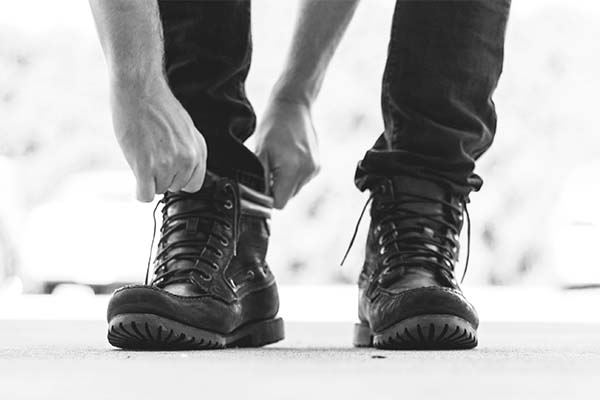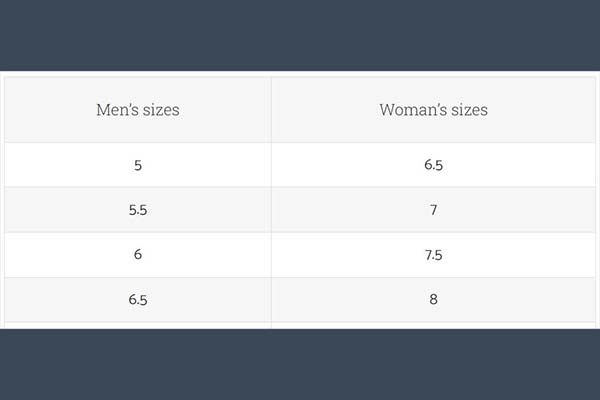What You Need To Know About Sand Socks
Sand socks are a type of socks that are made for walking, running, and playing in the sand. They’re made from a special type of neoprene. Unlike cotton socks, they’re easy to clean. Sand socks work like soft boots that protect your feet against heat and cold.
Do you play beach volleyball? Do you spend a lot of time at the beach? Even if you were visiting the beach, you’d love wearing sand socks. Some people say it’s “ninja socks.” Whatever you call it, sand socks are a different breed of socks.
If you want to enjoy your time at the beach, you’ll immensely enjoy having them. In this article, you’ll learn all about sand socks. What are they? What do they do? How to clean them? And whether they’re helpful for beach sports. Here’s everything you need to know about sand socks.
What Is A Sand Sock?
Sand Socks aren’t like cotton socks. Usually, you wear cotton socks to prevent your feet from sweating and rubbing against the shoes. But sand socks are made for use without wearing shoes.
You wear sand socks to the beach for professional use, like playing beach sports. And casual wear, like taking a stroll at the beach.
They use a unique neoprene fiber and protect your feet from cold and heat. While not the most robust material in the world, it can still protect your feet from harsh surfaces. When playing professionally, the tournament organizers will let you know whether you can or can’t use sand socks in the games.
Players love wearing sand socks during training or playing. Thanks to the specialized design, sand socks will continue to protect their feet from burning when the sand becomes uncomfortably hot. So, players can keep training and playing more than they usually would.
What Do Sand Socks Do?
Sand socks protect your feet from the hot sand at the beach. They’re usually made from lycra or spandex. They also have a thick layer of fiber for the sole part.
While you can walk on the sand comfortably wearing these socks, they aren’t waterproof. But they’re water-friendly. They dry fast and are easy to clean.
People who have sensitive skin wear sand socks to prevent blistering. Beach volleyball players also wear sand socks because they spend a long time on the sand. Sand socks are perfect for active use while at the beach. Snorkelers also wear them under the fins for extra protection and comfort.
Can Toddlers And Kids Wear Sand Socks?
Children have delicate skin. So, they’ll wear sand socks to protect their feet on the beach. Sand socks will help kids enjoy their playing time on the beach.
Buy Sand Socks on Amazon
Sand Socks Vs. Water Shoes
The most notable difference between sand socks and water shoes is the design. Sand socks have a thinner sole for better movement on the sand. Water shoes feature a thicker rubber sole.
Sand socks have two designs. The first is shorter, at the ankle level, with a fit elastic band. But the second comes a little higher than the ankle and features an adjustable strap. It holds the socks, so they don’t fall off your feet.
Water shoes provide more traction when walking on slippery rocks at the beach. Rubber is also flexible and will bend and twist with your movement.
Both sand socks and water shoes are easy to clean and will dry fast. Both are good for swimming, too. If you’re going to swim using fins, wearing sand socks prevent the rubber from the fins rubbing with your bare skin.
When in doubt and you can’t choose between sand socks and water shoes, consider your use. When you want to play volleyball or soccer, sand socks might be the better option. But when you want to walk, camp, hike around the beach, water shoes will work best.
Whether it’s sand socks or water shoes, make sure you get the highest quality gear. Poor quality will cause more harm than good. Ultimately, you want the equipment that will increase your performance, enjoyment, and comfort.
Do Sand Socks Keep Sand Out?
Yes, sand socks keep the sand out. They’re made of elastic material that stretches on the skin without “sticking.” They also come with a strap that fits above the ankle area. That way, the sand will stay out while your feet can breathe.
Sand socks will work best on sand beaches. The sole is too thin to protect you from sharp rocks. You’ll feel the texture through the socks. And you can walk on small pebbles as well. Sand Socks aren’t designed to handle walking on rocks and other sharp objects.
How To Clean Your Sand Socks?
You can clean your sand socks in the washing machine like your regular socks. While at the beach, you can take them off, let them dry, and shake the sand. Sand doesn’t stick to lycra; you can just shake it.
The standard sand socks are made of the same material as specialized wetsuits, neoprene, and spandex. And they follow the same cleaning rules. The best way to wash sand socks is using mild detergent and washing them by hand. Then, leave them to dry. But some brands use a different material that’s machine-washable (Check the ticket for the appropriate symbols).
When you’re washing them by hand, use fresh water for rinsing. You should also wash sand socks inside and out for a thorough clean. The seawater contains salt and other minerals, which will damage the fiber. So, make sure to use clean water after using your sand socks for a long time on the beach. Once washed, let them dry under direct sunlight.
For machine-washable sand socks, you want to use the appropriate setting. Depending on the brand and model of your washing machine, this could be “delicate,” “sport,” or “synthetics.”
All in all, it should be the low cycle. And you should use the minimum amount of soap you can use. Using too much soap will damage the neoprene material in the long run. After washing, dry your sand socks without heat or put them under sunlight.
When storing your sand socks, keep them in a cool, dry place. Never under direct sunlight.
For What Kind Of Sports Do I Need Sand Socks?
Sand socks are made for beach use. You can wear them and play all the beach sports. You can play volleyball, soccer, and whatever sport you can play at the beach without wearing shoes. Some scuba divers also wear sand socks under their fins.
For beach sports, sand socks protect your feet from burning. If you live near a beach and like to go for a morning walk, sand socks will prove helpful in those situations. In the morning, the sand can be cold if you’re not wearing some protection.
If you do fitness training on the beach, you can wear sand socks to comfort and protect your feet. If you run, they’ll make running easier on the sand.
Will Sand Socks Make It Easier To Play Beach Volley?
Yes, sand socks make it easier to play beach volleyball. They’ll prevent sand from getting between your toes, which may irritate you. While playing, you want to focus on earning points instead of worrying about the pain in your feet.
Nobody likes to feel the sting of every sand grain under their feet while playing beach volleyball. Sand socks can remove that pain.
Cotton socks are designed to keep your feet warm as they absorb the sweat. So, after a while of playing in cotton socks, your feet will burn. The cotton rubbing against the sand with your sweating will increase the heat.
With sand socks, your feet will remain cool. You can move, jump, and run without worrying about sweaty feet. Your movement becomes faster, lighter, and more precise. The hard sole of sand socks softens your landing after a high jump. Sand socks also offer some cushioning for your knees as you jump, bend, and strike.
Do I Need Sand Socks To Play Beach Soccer?
Yes, you need sand socks to play beach soccer. They make running and kicking easier. You can also feel more comfortable while playing on hot sand. So, wearing sand socks can actually enhance your beach soccer experience.
There’s also the issue of muscle ache. After prolonged running on the sand, the heat and uneven terrain can cause your muscles to strain. Sand socks shield against this issue because they offer an insulating layer.
Beach athletes also prefer to worry more about scoring than what they wear. Sand socks are made from material that works with you. Lycra stretches and contracts with your movements. Other socks might constrain your move; it’s the last thing you’d want when you want all the freedom of movement you can get.






